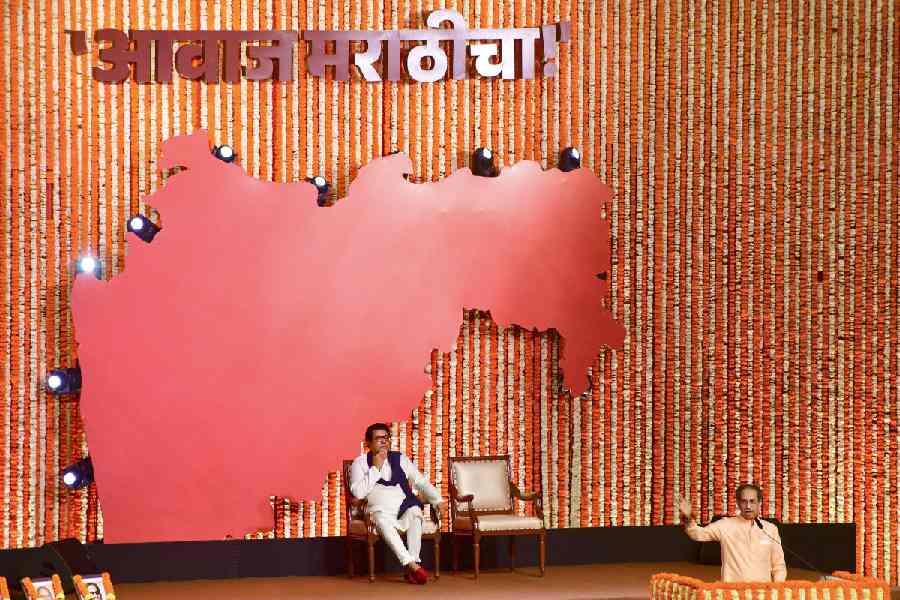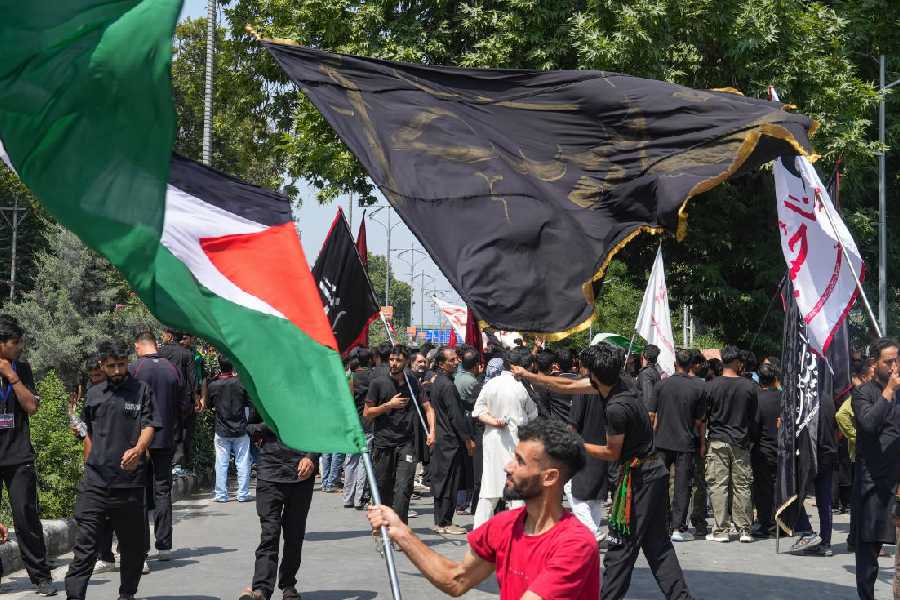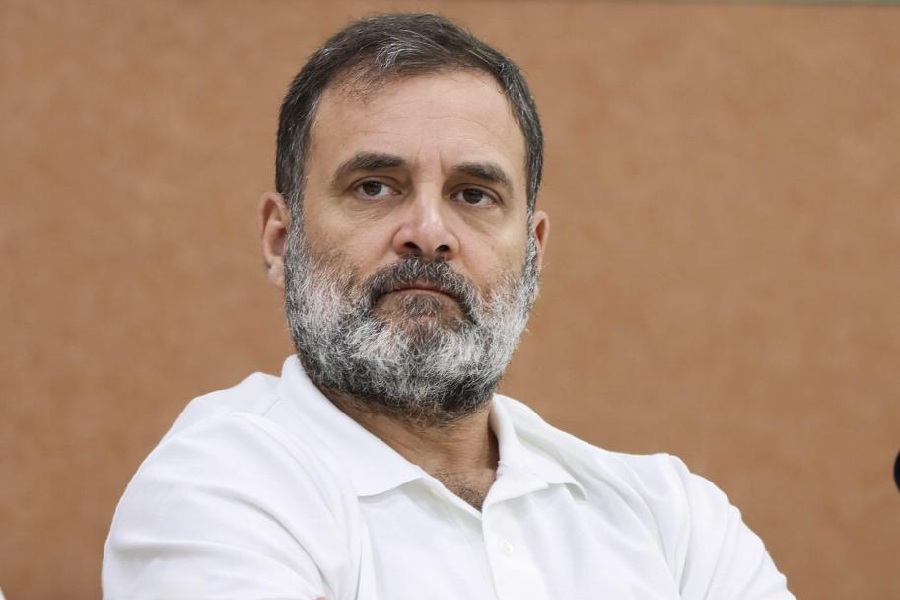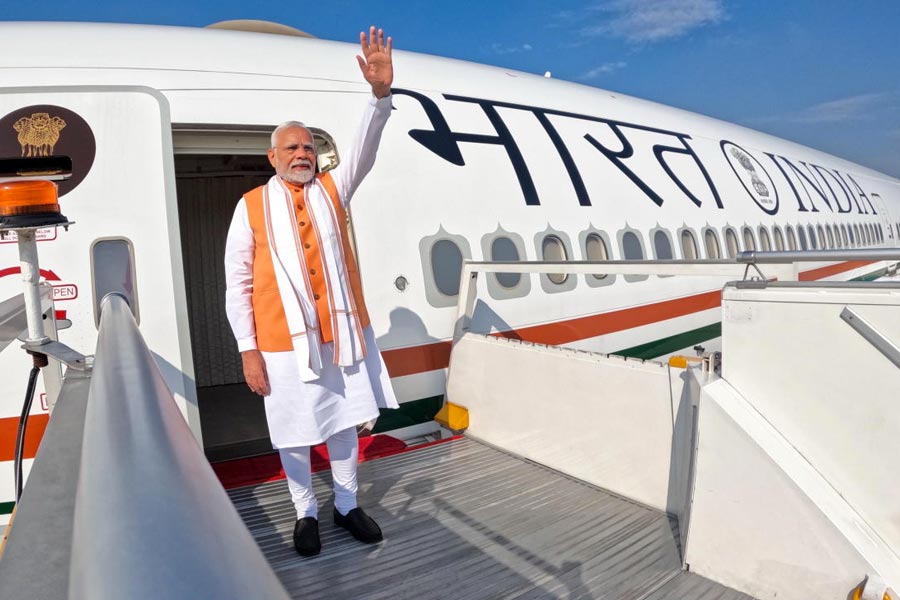 |
You really don’t need to join art school,” Joynul Abedin, the principal of Government Art College of Calcutta had remarked. He was going through sketches by a young man who had come all the way from Sylhet (now in Bangladesh) to study art in 1944. The newcomer was 25 and almost penniless. He did not know whether Abedin was rejecting or appreciating his work. But it didn’t matter — he was a tough soul who had run away from home at 17 and was living under different names to hide his identity.
He was Chiroranjan Dutta Chowdhury, who came to be known as “Khaled” Chowdhury, the pioneer stage designer of Bengali group theatre in its efflorescence post-Independence. He is turning 90 next year.
“I was born in my maternal uncles’ home in Dasgram, in Karimganj district of Assam, in 1921. From childhood, I was good at drawing. But I was equally passionate about music. Due to asthma, I didn’t think of taking singing lessons,” says Chowdhury. His mother died when he was nine. His father hated him and often beat him mercilessly. It made Chowdhury run away from home time and again. Finally he came to Sylhet. The Second World War had just started, everything was in a state of chaos, but Chowdhury survived using his drawing skills. His flair for lettering got him jobs in designing hoardings, posters and signboards.
Chowdhury became well known as an artist in the small town and came in touch with the Communist Party of India’s cultural squad, which later became IPTA. He not only drew posters for it, but also sang on stage with stalwarts like Nirmalendu Chowdhury and Hemango Biswas. However, everybody encouraged Chowdhury to get a formal art training in Calcutta. “Due to my IPTA connection, I found a place to stay in Calcutta and came close to Joynul Abedin. He used to give me illustration jobs in magazines,” recalls Chowdhury, though the art training never happened. “One could learn a lot just watching Joynul saheb working. It’s a pity he left for East Pakistan (Bangladesh) after the 1946 riots.”
Designing book covers not only brought fame and money, but placed Chowdhury among names like Satyajit Ray, Makhan Duttagupta and Surya Roy, who had elevated cover designing in Bengal into an art form. “But I came to realise that the writer, publisher and the reader were more important in this business.” Though disillusioned, he continued to design covers till the 1990s when he had almost 15,000 titles to his credit.
The world, however, was yet to know of his other talent. His ties with IPTA had long been broken after a discord with its senior members. He had, however, developed a relationship with Sambhu Mitra, who was a frequent visitor at Chowdhury’s rented flat on Meher Ali Road in Park Circus. Mitra, too, had left IPTA and formed Bohurupee with his wife Tripti and a few other theatre enthusiasts. Mitra wanted Khaled to design the stage for Bohurupee’s production of Tagore’s Raktokarabi. “I did not have any knowledge of stagecraft and Raktokarabi was a real test. It was a huge production. I was following everything intently during the rehearsals, when finally the visuals started emerging. I realised that though stagecraft is related only to painting, sculpture, architecture, music and dance also contribute to it.”
Raktokarabi, first staged in 1954, was a critical and commercial success. So was Chowdhury’s stage design. He had also worked on the play’s music and costumes. But he did not know how his art was going to enrich the repertoire of Bengali theatre.
Chowdhury became more involved with the stage. Many theatre groups wanted him to design their productions. Films did not attract him, though occasionally he designed publicity layouts for Rwitik Ghatak (Bari Theke Paliye and Subarnarekha) and created a dummy castle for Mrinal Sen (Chorus). With Badnam Monto in 2004, Khaled completed 50 years in stage direction. His notable productions include Bohurupee’s Putul Khela and Pagla Ghora, Gandhar’s Tokhon Bikel and Janmodin and Nandikar’s Meghnadbadh Kabya.
Chowdhury does not work any more. But despite his failing health, he still has the energy to take long walks through the busy streets of Gariahat from his present residence on Fern Road. A bachelor, Chowdhury lives a simple life and maintains a very low profile. He cannot do otherwise. After being awarded the coveted Kalidas Samman by the Madhya Pradesh government in 2002, he asked: “Do you think I ever imagined that all this could happen?”










